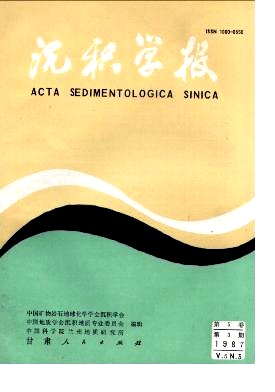MECHANISM OF ENRICHMENT OF KUNYANG AND HAIKOU PHOSPHARITE DEPOSITS, YUNNAN CHINA
- Publish Date: 1987-09-10
Abstract: The study area is located on the southwest of Kunming and the west of Dianchi Lake in the eastern Yunnan, where is an important phosphorous producting area in China. Two phosphorous deposits are involved in this area (Fig. 1) - the Kunyang phosphorite deposits and the Haikou phosphorite deposits. They are well known for the great reserves and outstanding quality. The stratigraphy of phosphorite-bearing layers are considered as the Zhongyichun member, Yuhuchun Formation in the Meishuchun section of Kunyang (Fig.2), which is one of the international candidate sections of Cambrian /Precambrian boudary. The tectonic setting of the eastern Yannan during the early Cambrian when the phosphorite was deposited, the Yangtze cratonic massif occurred as a platform and was flanked by the Yunnan-Qinghai-Tibet sea basin on the West and the South China Sea trough on the east. The middle of Yunnan and Xiushoushan paleoconti-nents extended along the west and east margins of craton respectively and a rift basin was in the middle. Early Cambrian phosphorite was deposited in embayment lagoon environment. Fig. 4 shows the paleogeography of that time. Several favourable conditions were provided to the enrichment of phosphorite deposits in the embayment lagoon, because of the paleogeography situation. 1. The dispersion phosphorous in deep sea could continuously migrate to the shallow bay by upwellings since the bay was connected with the deep sea basin and trough. 2. Certain amount of phosphorous was supplied by the runoff from the paleocontinents which has high basic amount of phosphorous. 3. Due to the continuous supply of phosphorous and other biogenic elements by upwelling and river discharge, the shallow bay was rich in organisms. There are bacteria and algae (plate I -1, 2, 3, 4) which are well known as the abundant organisms in the early Cambrian. The small shelly fossils, as the pioneer of Phanerozoic invertebrates also occurred. Those organisms efficently fixed the dispersive phosphorous of sea water and made the possibility for them to deposit on the bottom of bay. These three points mentioned above provided favourable conditions for the shallow bay to collect phosphorous, and never lose or only lose little of them.As a result, a great quantity of phosphate could be accumulated. However, the distribution of the Kunyang and Haikou phosphorite deposits indicates that the final enrichment of phosphorous must be controlled by particular factors. The Kunyang and Haikou phosphorite deposits lie along two flanks of the Xiangtiaochong anticline (Fig. 3) in the middle-west part of the shallow bay. A paleosubmarine uplift is inferred between two deposits by the study of tectonics (Fig. 7), the thickness of ore layers and sedimantary facies. It is predicted that the extended is parallel to the trend of Xiangtiaochong anticline. 1. Tectonic setting. In addition to the longitudinal fault system created the rift basin, there is latitudinal-horst fault system which could be thought as the geological background for the paleo-submarine uplift. 2. Thickness. According to the exploration data, the thickness of ore layers of two deposits has a increasing tendency along the downdip slops of the inferred uplift with a ratio of one or two permillage. 3. Sedmmentary facies. There are a lot of differences in the thickness of ore layers, lithology and the sedimentary characters (Fig. 5, 6) between the Kunyang and Haikou deposits which are only less than 10km apart. Also mud cracks are observed as the exposure features. Scourand fill structures and cross bedding (plate I-7) are common and some slump structures (plate I-8) have been found with northward and southward dip along two flanks of inferred uplift respectively. In fact, it could be concluded that the paleosubmarine uplift existed and uplift was considered as an important control factor of phosphorite enrichment. It is based on: 1. The submarine uplift created a warm, disturbed and very shallow water environment (Fig. 7) along two flanks. This kind of environment was favourable
| Citation: | Zeng Yunfu, Yang Weidong. MECHANISM OF ENRICHMENT OF KUNYANG AND HAIKOU PHOSPHARITE DEPOSITS, YUNNAN CHINA[J]. Acta Sedimentologica Sinica, 1987, 5(3): 19-27. |






 DownLoad:
DownLoad: